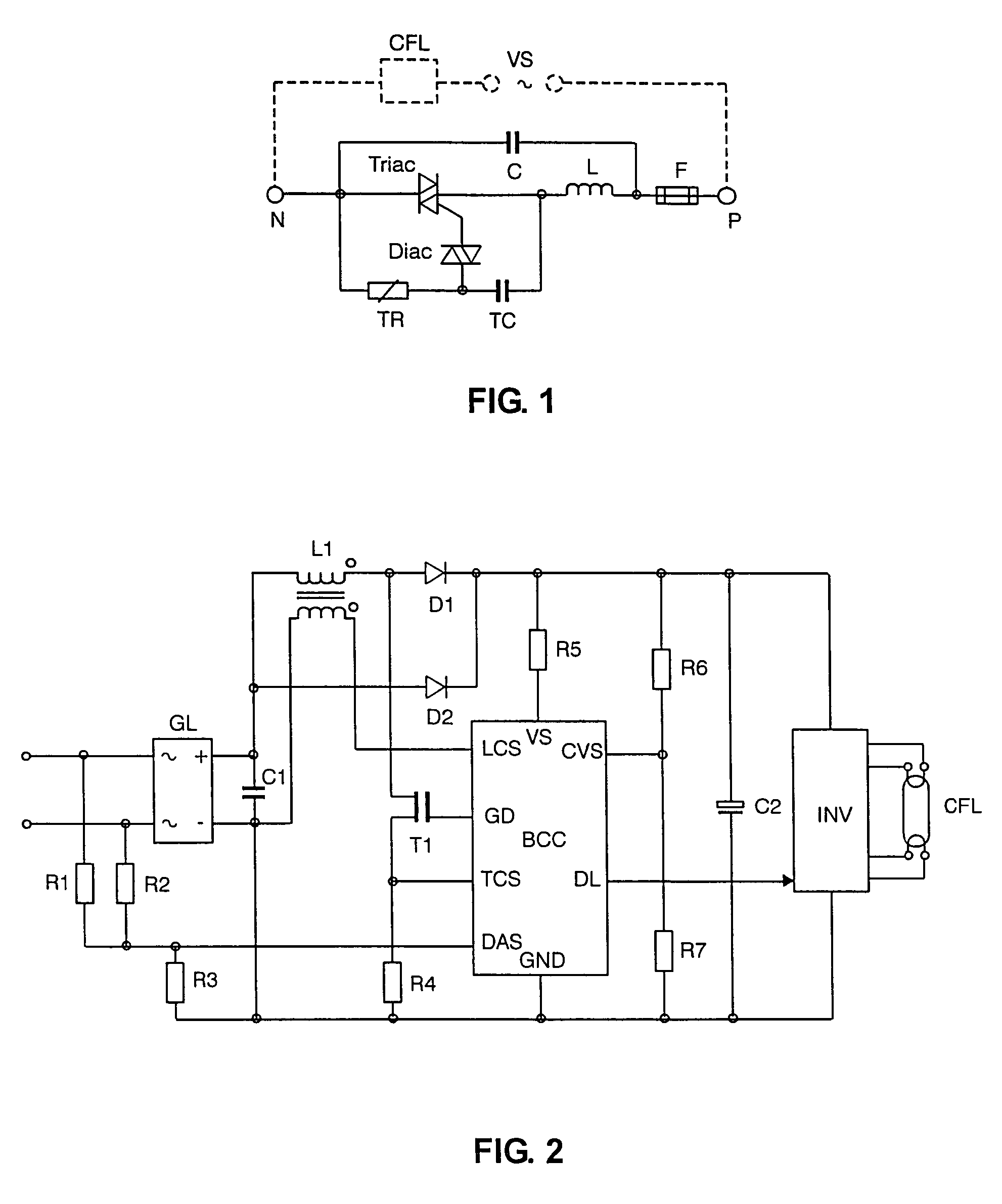Method for varying the power consumption of capacitive loads
a technology of capacitive load and control circuit, which is applied in the direction of ac-dc conversion, electric variable regulation, sustainable buildings, etc., can solve the problems of instabilities of capacitive load such as compact fluorescent lamps, and achieve positive influence on the overall life of the lamp, prevent overvoltage, and reduce disruptive effects
- Summary
- Abstract
- Description
- Claims
- Application Information
AI Technical Summary
Benefits of technology
Problems solved by technology
Method used
Image
Examples
Embodiment Construction
[0023]FIG. 1 shows an example of the circuit arrangement for the operation of a load using a phase-gating dimmer. Shown is a circuit in which a load CFL is operated by an AC voltage / system power supply VS. The load CFL is supplied with power by this voltage source VS via a phase-gating dimmer (between the points N and P). Phase-gating dimmers provide a periodic system power supply to the load which is isolated in each half-period, with a time delay, by tripping a power breaker triac by means of a variable timing element diac, TR, TC. In addition to the power breaker triac and the timing element, which is formed from a diac, a capacitor TC and a variable resistor TR, there are generally further provided in the dimmer circuit a fuse F and, for radio interference suppression, also a capacitor C and an inductor L.
[0024]The method according to the invention is based on the arrangement in terms of circuitry of a step-up converter which is formed in FIG. 2 as part of the integrated ballast...
PUM
 Login to View More
Login to View More Abstract
Description
Claims
Application Information
 Login to View More
Login to View More - R&D
- Intellectual Property
- Life Sciences
- Materials
- Tech Scout
- Unparalleled Data Quality
- Higher Quality Content
- 60% Fewer Hallucinations
Browse by: Latest US Patents, China's latest patents, Technical Efficacy Thesaurus, Application Domain, Technology Topic, Popular Technical Reports.
© 2025 PatSnap. All rights reserved.Legal|Privacy policy|Modern Slavery Act Transparency Statement|Sitemap|About US| Contact US: help@patsnap.com



